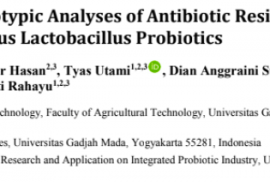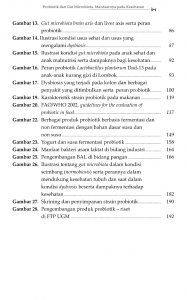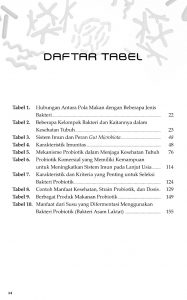Abstract
In the authors’ previous study, four unique Lactobacillus strains (Lactobacillus plantarum Dad-13, Lactobacillus plantarum Mut-7, Lactobacillus plantarum T-3 and – Received Lactobacillus paracasei SNP-2) from Indonesian fermented foods and healthy feces have been studied as probiotic agents. In the current study, antibiotic resistance phenotypes of the highlighted Lactobacillus plantarum and Lactobacillus paracasei against eight antibiotics (amoxicillin, tetracycline, erythromycin, clindamycin, chloramphenicol, streptomycin, kanamycin, ciprofloxacin) and antibiotic resistance genes of these strains were investigated. The bacterial antibiotic susceptibility to eight antibiotics was assessed using disk diffusion method. Genome sequencing was carried out using NovaSeq 6000 sequencing platform. Genome was annotated using Rapid Annotation using Subsystem Technology v.2.0. Each group of the predicted products of resistance genes was further aligned using multiple sequence comparison by log- expectation and their functions were verified using comprehensive antibiotic resistance database 2020. All strains showed resistance to aminoglycoside and ciprofloxacin but sensitive to amoxicillin, clindamycin and erythromycin. Resistance to chloramphenicol and tetracycline varied within the strains. Two strains were sensitive and others were intermediate resistance to chloramphenicol. One strain was resistant to tetracycline, while the other three strains demonstrated intermediate resistance to the antibiotic. Genome sequence of the four strains verified the presence of the tetracycline, β-lactamase and ciprofloxacin resistance genes as well as multidrug resistance efflux systems. Occurrence of the resistance genes was correlated to the phenotype results, except for amoxicillin and aminoglycosides. Rapid Annotation using Subsystem Technology annotation showed that all Lactobacillus strains did not include transposable elements, gene transfer agents and plasmid linked functions; thus, horizontal transfer of the antibiotic resistance genes unlikely occurred.












